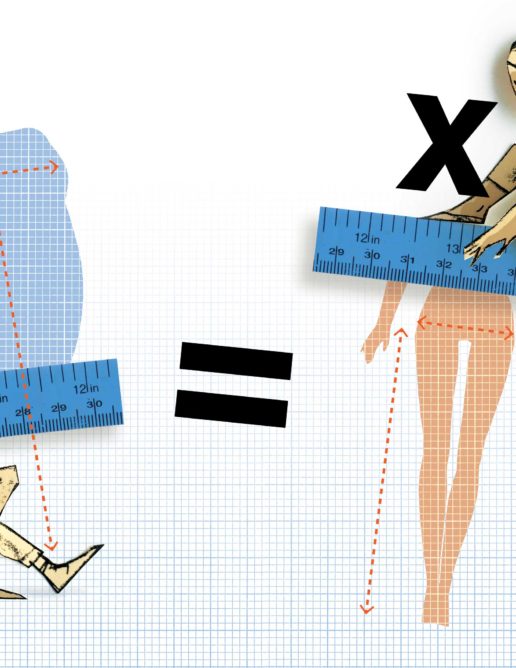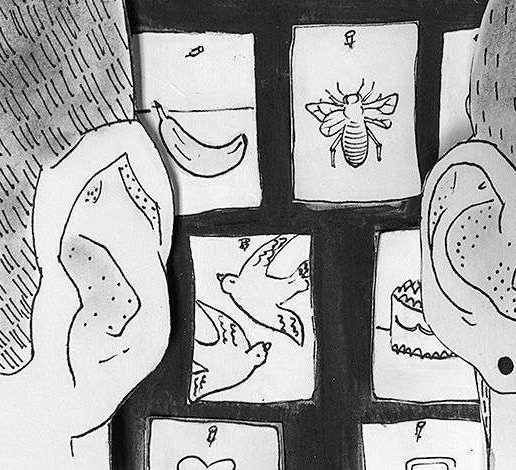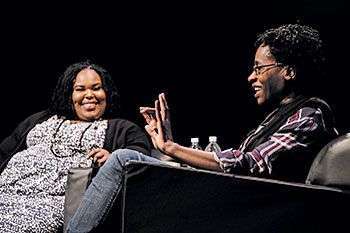What Is a Family?
A biology teacher describes inclusive teaching about families; sexual, reproductive, and parenting behaviors; and models of heredity.

A biology teacher describes inclusive teaching about families; sexual, reproductive, and parenting behaviors; and models of heredity.

Co-teachers help their students analyze texts to identify and discuss patriarchy and oppression.

Hip-Hop: Beyond Beats and RhymesWritten and Directed by Byron HurtMedia Education Foundation, 200660 mins, DVD The Hip-Hop Education Guidebook Volume 1: A Sourcebook of Inspiration and Practical ApplicationEdited by Marcella […]

Contrary to their spin machine, Disney’s princesses are far from role models

Two Chicago educators question the premier teacher education accrediting agency’s removal of social justice and sexual orientation language from its standards.

School funding systems mirror—and reproduce—the inequality we see all around us.

Three 4-year-old boys sat in a circle, each with a doll tucked under his shirt. “It’s time to have our babies!” Nicholas* declared. One by one, the boys pulled their […]
Last spring, my second graders gathered on the rug, discussing the impending 50th anniversary of the historic Brown vs. Board of Education decision. I asked how their lives would have […]

A principal deals with a student’s unusual request.

A unit on gender stereotypes inspires students to take action.

A high school teacher looks at how a daily activity focusing on the representation of women helped transform her classroom.

A high school English teacher deconstructs “Hero’s Journey” curriculum, shows its patriarchal prejudice, and talks about teaching collective rather than only individual transformation.

A biology teacher focuses on how rethinking classroom language around gender and reproduction can impact inclusion.

A math teacher uses Barbies and action figures to teach proportional reasoning and other skills — and to help students think about society’s expectations of our shapes and sizes.
In the spring 2011 issue of Rethinking Schools we editorialized about the immense gulf between our terrible environmental crisis — especially the climate crisis — and the adequacy of schools’ curricular response. Seven years later, we still see this gap between crisis and curriculum — which is why we are launching this regular “Earth, Justice, and Our Classrooms” column: to offer encouragement and resources for teachers to help students explore the roots and consequences of the crisis and figure out how to respond.

Since 1993, the Mexican border city of Ciudad Juárez has been shaken by disappearances of teenage girls and young women. Officials say they have few leads. The murders in Juárez have received some international attention, primarily due to government inaction. Yet little has been done by the government to prevent violence against women and girls, as officials neglect to bring their perpetrators to justice.
Residents do not let these deaths go unnoticed as hundreds of pink crosses — a symbol of these missing women — dot the border. An increase in these deaths coincided with the implementation of the North American Free Trade Agreement (NAFTA). A treaty between Mexico, the United States, and Canada, NAFTA sought to increase investment opportunities by eliminating tariffs and, like many other economic agreements, benefited the economic elites of the three countries while resulting in widespread unemployment, increased class stratification, and mass emigration. Most of the “disappeared” women work in assembly plants or maquiladoras, owned by the United States and transnational corporations that dashed to northern Mexico post-NAFTA to reap the benefits of lower wages and lax environmental regulation.
Students analyze cartoons from Popeye to Brave to see how media teaches children white- and male-supremacist ideas.
One of a Kind, Like Me/Unico como yo by Larin Mayeno // Illustrated by Robert Liu-Trujillo // Blood Orange Press, 2016 Jacob’s New Dress by Sarah and Ian Hoffman // […]

The youth on our cover is Lana “kQween” Grant. She was photographed by Lois Bielefeld as part of her Androgeny series. kQween’s pride—and the empathy and respect of Bielefeld’s image—are […]

A high school teacher realizes that, despite her school’s diverse student body, the students on the stage at assemblies are virtually all white and male. She sets out to understand why and to change the pattern.

Inspired by students’ responses to her own pregnancy, a high school English teacher develops a unit based on teen pregnancy and motherhood—rejecting the usual deficit-based narrative of teen parenting.

Middle schoolers explore how Shakespeare plays with gender expression and expectations in A Midsummer Night’s Dream.

A 9th-grade teacher lays groundwork for sex education that is sex-positive and inclusive.

It is March 2015. America is reeling from the killings of Michael Brown, Eric Garner, John Crawford, and Ezell Ford. As the hashtag #BlackLivesMatter is trending, images of unarmed Black […]

From the Dress-Up Corner to the Senior Prom:Navigating Gender and Sexuality Diversity in PreK–12 Schools By Jennifer Bryan(Rowman & Littlefield Education, 2012) I teach at a school that names social […]